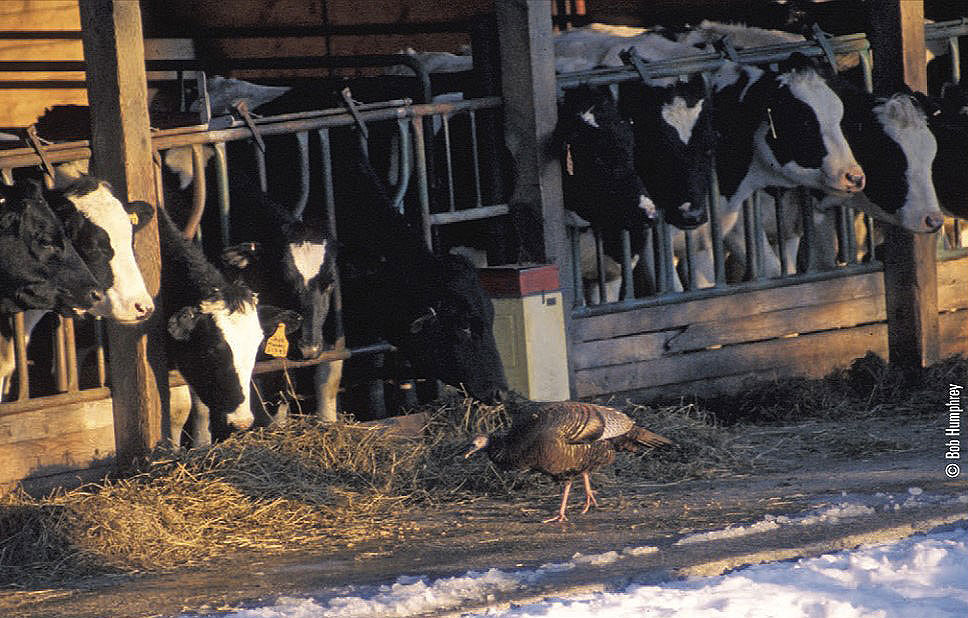
Industrial agriculture is the primary system for food production in the United States. The term “industrial agriculture” refers to the type of farming which raises and cultivates large numbers of livestock and plants in high-density environments. It uses modern technology to promote faster growth and reduce illness and death rates in livestock, creating food products on a mass scale.
Cattle, poultry, pigs, and other types of livestock are kept in controlled conditions that encourage rapid reproduction and weight gain, while food crops are sprayed with chemical fertilizers and pesticides to promote growth and eliminate insects and other organisms that could destroy them.
There are some people—investors and businesses owners, in particular—who consider industrial agriculture to be one of the world’s greatest innovations. Others believe it is harmful to the environment, as well as to the health of both animals and humans. It is a fact that people need to eat in order to survive. Some of us hunt and forage for our own food in the wild, but a majority of us get our food from grocery stores and supermarkets.
The world’s population is expected to hit 10 billion people by the year 2050, and one method for producing food in bulk is factory farming—but is industrial agriculture actually a good thing? Here are the pros and cons:
Pros of Industrial Agriculture

1. It increases food production.
Large-scale industrial farms have an advantage over traditional farms when it comes to producing food fast and in larger amounts. This could be a good thing, considering that the world’s population continues to grow steadily.
2. It lowers consumer costs.
Industrial farms are also helpful in reducing food costs and making food more accessible, even for consumers who have lower incomes. Industrial agriculture uses modern technology and equipment to process meat, eggs, milk, crops, and other food items in a quick and efficient way, reducing their overhead expenses while earning more revenue and profits and, in turn, lowering food costs.
3. It encourages technological development and innovation.
These farms rely heavily on modern tools and technology, which means scientists and engineers need to continue to find ways to improve equipment and create new machines to speed up food production and make it more efficient. This is beneficial not only to factory farms but to businesses in other industries as well.
4. It creates employment opportunities.
While industrial agriculture depends on machinery, that doesn’t mean human work isn’t necessary. When these large arms are established, employment opportunities are created and the local economy where it is located improves.
5. It lengthens food availability.
Industrial agriculture has helped create new ways to transport, store, and process food, allowing these products to last longer without going bad. This has helped increase the amount of food available while reducing waste.
Cons of Industrial Agriculture

1. It increases the risk of animal cruelty.
Factory farms keep animals in tight, confined areas where they don’t have the space to roam free and do what animals naturally do. In some cases, animals are kept in cages where they can’t move around at all. Their living areas aren’t kept clean and they are often force-fed vitamins, minerals, and other substances that make them grow bigger and faster. Animals are treated more as disposable commodities than living creatures.
2. It negatively impacts small business agriculture.
In most cases, industrial farms are owned by large corporations with the money to use modern tools and equipment, larger spaces, and expensive additives, allowing them to produce more food more efficiently. Because they are able to mass-produce these products at little expense, they are also able to sell them to grocery stores and supermarkets at a much lower price than smaller farms can, as these typically don’t have the funds to invest in technologically advanced machines.
3. It creates environmental concerns.
There are hundreds, if not thousands, of animals being raised on factory farms. These animals produce an overwhelming amount of waste and byproducts that are often dumped into nearby bodies of water, polluting them. The waste produced can even pollute the air, damage the ozone layer, and spread to the surrounding land, rivers, and streams.
4. It contributes to health problems.
Industrial agriculture can be detrimental to our health in a few ways. One is through the pollution it produces, which is harmful to those who live nearby and makes them susceptible to illnesses. Another way is through the herbicides and insecticides commonly used on food crops which are associated with poisoning and illnesses.
5. It can produce low-quality food.
As we mentioned above, food crops are often sprayed with pesticides, which could make people sick when eaten. Factory farms inject their animals with antibiotics that are supposed to prevent them from getting sick in the unsanitary conditions they are kept in. However, bacteria can mutate and develop into illnesses that can’t be treated by antibiotics, and these illnesses are then transmitted to people who eat them. In addition to pesticide poisoning and animal-borne illnesses, the stressful environments in which animals are kept result in poor food quality as well.
Conclusion
As you can see, industrial agriculture provides some benefits, though there are many drawbacks as well. Ultimately, it is up to you to weigh the pros and cons. If you decide that you do not want to support industrial agriculture, there are plenty of alternatives, such as hunting for your own food or creating a microfarm on your property and raising your own livestock for meat, eggs, milk, and more.






























